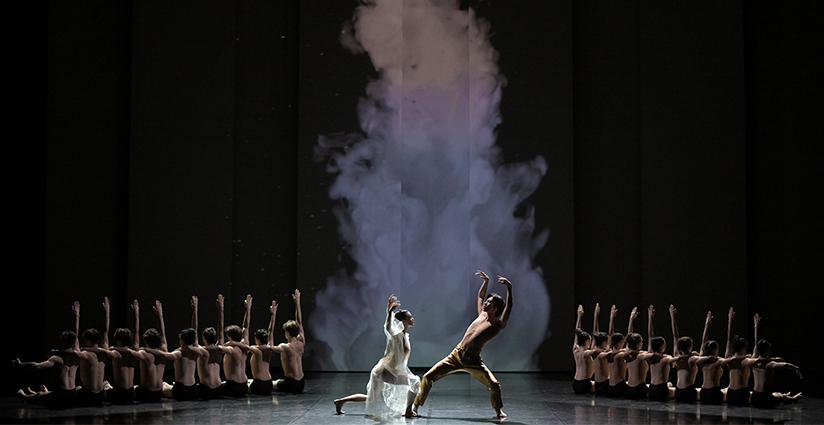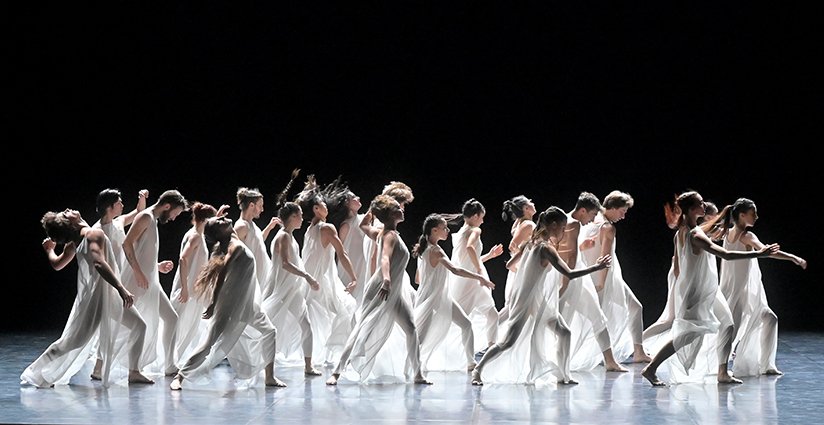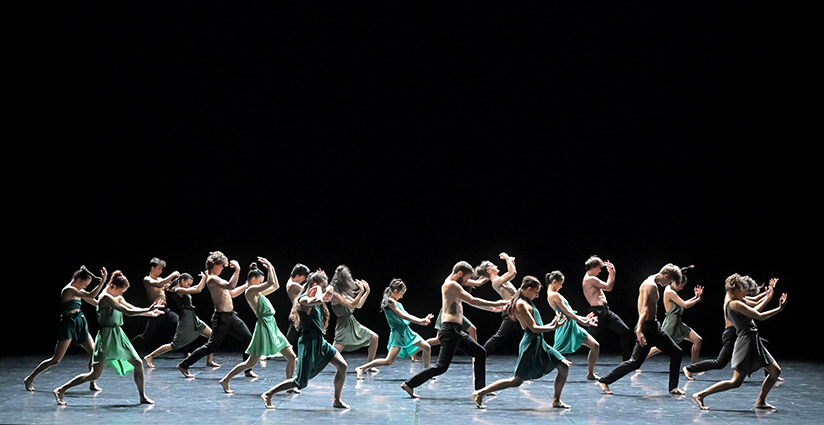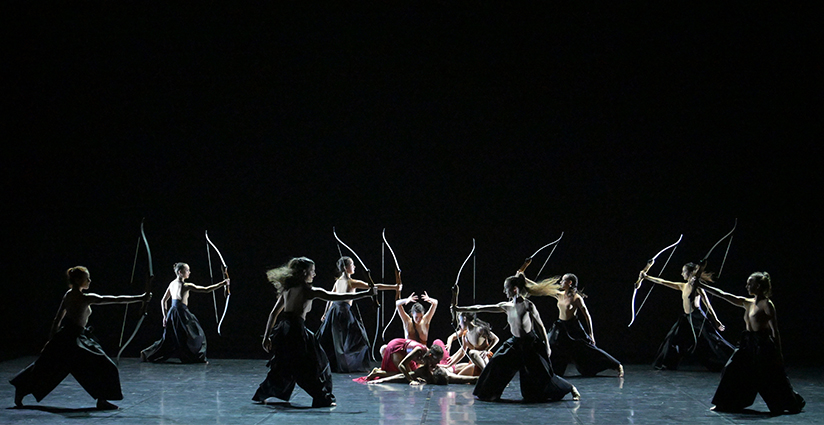For this project, Angelin Preljocaj brings together ten dancers from the Ballet Preljocaj and ten dancers from the Opera National de Bordeaux. This collaboration began in 2018 through a partnership between both companies, which resulted in the creation of Ghost that same year, an immersion in the world of Marius Petipa. It also led the Ballet de l’Opera National de Bordeaux to work on several reprises of works such as Snow White, La Stravaganza and Un trait d’union.
In Mythologies, Angelin Preljocaj explores our contemporary rituals, along with the founding myths that shape our collective imagination. Like the impressionists before him, Preljocaj utilises our ideals and beliefs to reveal what is lying within the folds of our existence, thus inducing a dialogue between ancient and modern mythologies.
Beyond the legendary tales and stories he enjoys choreographing, myths and mythology have been inspiring Angelin Preljocaj since the very beginning of his career.
À nos héros (1986) mocked totalitarian gestures and the faith in political mythology. Hallali Romée (1987) presented the “virgin of Orléans” as a very unorthodox heroin. Annunciation (1995) embodied the founding act of religions. Eldorado (2007) turned the mystical and highly ironical atmosphere of Stockhausen’s music into God’s private ritual. And then, One thousand years of peace (2010), based on the Apocalypse of John, was an early attempt at unveiling the reality that hides between the lines of our modern rituals. And finally, La Fresque (The painting on the wall) (2016) followed the footsteps of ancestral, belligerent and tribal figures.
“Dance being an art of the inexpressible par excellence, isn’t it best able to expose our fears, our anxieties and our hopes? It stigmatises our rituals and uncovers the incongruity of our postures, whether they are social, religious or pagan.”




